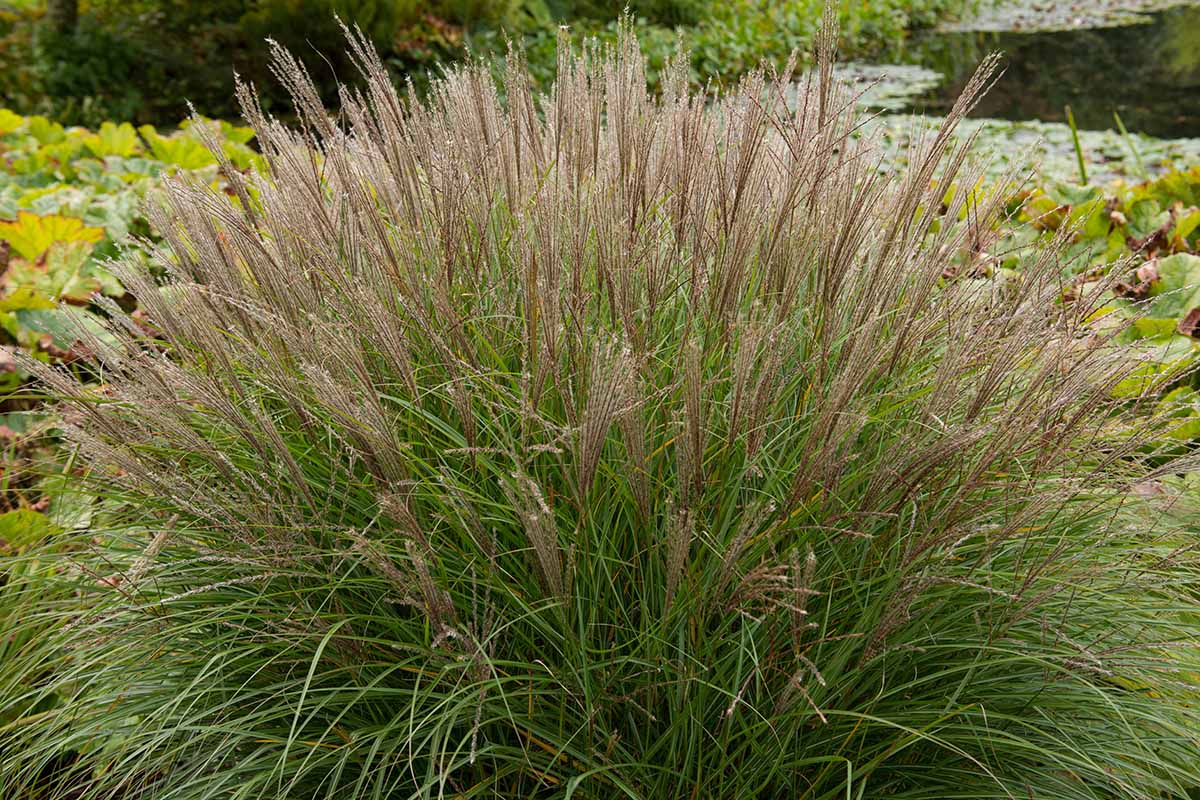Home>Gardening & Outdoor>Landscaping Ideas>When To Plant Grass In New Mexico


Landscaping Ideas
When To Plant Grass In New Mexico
Modified: February 18, 2024
Find the best landscaping ideas for planting grass in New Mexico. Learn when to plant grass and create a beautiful lawn in your yard. Discover expert tips and advice.
(Many of the links in this article redirect to a specific reviewed product. Your purchase of these products through affiliate links helps to generate commission for Storables.com, at no extra cost. Learn more)
Introduction
Welcome to the Land of Enchantment! New Mexico’s diverse landscapes, from the Chihuahuan Desert to the Sangre de Cristo Mountains, offer a unique canvas for landscaping. Whether you’re a longtime resident or a newcomer to the state, one of the most rewarding landscaping projects is establishing a lush, vibrant lawn. However, achieving a thriving lawn in New Mexico requires careful consideration of the state’s distinctive climate and soil conditions.
In this comprehensive guide, we’ll explore the best practices for planting and caring for grass in New Mexico. From understanding the climate to selecting the right grass type and preparing the soil, we’ll cover all the essential steps to help you create a beautiful, resilient lawn that can withstand the challenges of New Mexico’s environment.
So, if you’re ready to embark on a journey to transform your outdoor space into a verdant oasis, let’s dive into the fascinating world of landscaping and discover the secrets to successful grass planting in the Land of Enchantment.
Key Takeaways:
- Plant grass in New Mexico during spring or fall for the best chance of success. Choose resilient grass types like buffalograss and blue grama grass that can withstand the state’s arid climate and temperature extremes.
- Prepare the soil by testing, amending, and improving drainage before planting grass. Follow best practices for seeding, irrigation, maintenance, and pest management to ensure a vibrant, resilient lawn in New Mexico.
Read more: When To Plant Grass Seed In New York
Understanding New Mexico’s Climate
New Mexico’s climate is as diverse as its landscapes, encompassing arid deserts, high-altitude plateaus, and mountainous regions. The state experiences relatively low annual precipitation, with varying temperature extremes and high levels of evaporation. Understanding these climatic factors is crucial when planning to plant and maintain a healthy lawn.
One of the defining characteristics of New Mexico’s climate is its aridity. Many regions of the state receive minimal rainfall, particularly in the southern and central areas. This arid environment presents challenges for lawn maintenance, as grasses must be able to withstand periods of drought and heat stress.
Furthermore, New Mexico’s temperature fluctuations can be significant, especially in high-altitude areas. Winters can bring freezing temperatures and occasional snowfall, while summers often see scorching heat. These temperature extremes can impact the viability of certain grass species, making it essential to select varieties that can thrive in the state’s diverse climate.
Another crucial factor to consider is the state’s elevation. New Mexico’s average elevation is among the highest in the United States, with many areas sitting at over 5,000 feet above sea level. This elevation contributes to cooler average temperatures and increased ultraviolet (UV) radiation, both of which can affect the growth and health of grasses.
By gaining a comprehensive understanding of New Mexico’s climate, including its aridity, temperature variations, and elevation-related influences, you’ll be better equipped to make informed decisions when choosing the right grass species and implementing effective lawn care practices. With this knowledge as our foundation, we can now explore the optimal timing for planting grass in the Land of Enchantment.
Best Time to Plant Grass in New Mexico
Timing is crucial when it comes to planting grass in New Mexico. The state’s climate, characterized by aridity and temperature extremes, significantly influences the best time to establish a new lawn or overseed an existing one. In general, the optimal periods for planting grass in New Mexico are during the transitional seasons of spring and fall.
Spring offers favorable conditions for grass establishment, as the warming temperatures and increased daylight hours create an ideal environment for seed germination and root development. However, it’s essential to aim for early spring planting to allow the grass to establish strong roots before the onset of the scorching summer heat. By initiating the planting process in early spring, typically between late March and early May, you can take advantage of the optimal growing conditions and give your grass a head start before the summer stressors set in.
Alternatively, fall presents another opportune window for planting grass in New Mexico. As temperatures begin to moderate after the peak of summer, usually from late August through October, the cooler weather and potential rainfall create a conducive setting for successful grass establishment. Planting in the fall allows the grass to develop robust roots throughout the milder months, providing a foundation for vigorous growth when spring arrives.
It’s important to consider the specific microclimates within New Mexico when determining the best time for grass planting. Regions with higher elevations, such as the mountainous areas, may have shorter growing seasons and earlier frosts, impacting the ideal planting windows. Likewise, low-lying desert areas may experience more pronounced temperature fluctuations, influencing the timing of grass planting activities.
By aligning your grass planting efforts with the optimal timing in spring or fall, you can maximize the chances of establishing a resilient, healthy lawn that can thrive in New Mexico’s unique climate. With the timing considerations in mind, the next step is to explore the types of grass that are best suited for the diverse landscapes of the Land of Enchantment.
Types of Grass Suitable for New Mexico
Choosing the right type of grass is pivotal to the success of any lawn in New Mexico. Given the state’s arid climate, varying elevations, and temperature extremes, it’s essential to select grass species that exhibit resilience, drought tolerance, and adaptability to the local conditions. Several grass varieties have proven to thrive in New Mexico’s diverse landscapes, offering homeowners a range of options to create lush, sustainable lawns.
1. Buffalograss (Buchloe dactyloides): As a warm-season, native grass species, buffalograss is well-suited to the arid environments of New Mexico. It boasts exceptional drought tolerance and requires minimal water once established. Its low maintenance requirements and ability to withstand high temperatures make it an excellent choice for lawns in the state.
2. Blue Grama Grass (Bouteloua gracilis): Another native warm-season grass, blue grama grass, thrives in New Mexico’s dry, sunny conditions. It forms dense, low-growing tufts and exhibits excellent drought resistance. Its fine texture and attractive seed heads make it a popular choice for homeowners seeking a resilient, visually appealing lawn.
3. Tall Fescue (Festuca arundinacea): For cooler, higher-elevation regions of New Mexico, tall fescue is a cool-season grass that can withstand temperature variations and moderate shade. Its deep roots and ability to retain color during the winter months make it a suitable option for lawns in mountainous areas or northern parts of the state.
4. Perennial Ryegrass (Lolium perenne): Similarly, perennial ryegrass, with its rapid establishment and lush, fine texture, is well-adapted to cooler climates and can be used in combination with other grass species for overseeding or creating a robust, multi-purpose lawn.
When selecting the appropriate grass type for your New Mexico lawn, consider factors such as water availability, sunlight exposure, elevation, and anticipated foot traffic. Additionally, consulting with local landscaping professionals or cooperative extension services can provide valuable insights into the most suitable grass species for your specific region within the state.
By choosing grass varieties that align with the environmental demands of New Mexico, you can lay the groundwork for a resilient, visually appealing lawn that enhances the beauty of your outdoor space while withstanding the challenges of the state’s climate.
The best time to plant grass in New Mexico is during the late spring or early fall. This allows the grass to establish itself before the extreme heat of summer or the cold of winter. Make sure to choose a grass variety that is well-suited to the climate and soil conditions of New Mexico.
Preparing the Soil for Planting
Before embarking on the process of planting grass in New Mexico, it’s essential to ensure that the soil provides an optimal foundation for healthy growth. The state’s diverse landscapes encompass a range of soil types, from sandy desert soils to rocky mountain terrains, each with its unique characteristics. Regardless of the specific soil composition in your area, several key steps can help prepare the soil for successful grass planting.
1. Soil Testing: Conducting a soil test is a fundamental starting point in the preparation process. A comprehensive soil analysis can reveal essential information such as pH levels, nutrient content, and soil structure. This insight enables you to make informed decisions regarding soil amendments and fertility management, ensuring that the soil provides an ideal environment for grass growth.
2. Soil Amendment: Based on the results of the soil test, incorporating organic matter, such as compost or well-rotted manure, can enhance the soil’s structure and fertility. Organic amendments improve moisture retention, promote beneficial microbial activity, and contribute to overall soil health, particularly in arid environments where water conservation is critical.
3. Improving Drainage: Addressing drainage issues is crucial, especially in areas prone to waterlogging or poor drainage. Amending the soil with coarse sand or organic materials can aid in promoting adequate drainage, preventing water accumulation that can hinder root development and lead to lawn stress.
4. Leveling and Grading: Achieving a smooth, even surface through proper leveling and grading is essential for promoting uniform grass growth and facilitating effective irrigation. Addressing any uneven terrain or compacted areas prepares the ground for optimal seed-to-soil contact, fostering successful germination and establishment.
5. Applying Starter Fertilizer: Introducing a high-phosphorus starter fertilizer when preparing the soil can provide essential nutrients to support initial root development and early growth. This step can give newly planted grass a vital boost, helping it establish a strong foundation for long-term health and resilience.
By diligently preparing the soil for grass planting, you can create an environment conducive to robust root development, efficient water utilization, and sustained nutrient availability. These preparatory measures set the stage for successful grass establishment and long-term lawn vitality, laying the groundwork for a thriving outdoor space in the diverse landscapes of New Mexico.
Read more: When To Walk On New Grass
Planting and Caring for Grass in New Mexico
Once the soil is prepared and the optimal timing for planting has been determined, the process of establishing and maintaining a healthy lawn in New Mexico can commence. Whether seeding a new lawn or overseeding an existing one, several essential steps and ongoing care practices are integral to the success of the grass in the state’s diverse and demanding climate.
1. Seed Selection: Choosing high-quality grass seed suited to New Mexico’s climate and soil conditions is paramount. Selecting a blend of grass varieties tailored to the specific microclimate and intended use of the lawn can enhance resilience and overall performance.
2. Seeding and Sodding: Whether opting for traditional seeding or sod installation, ensuring proper seed-to-soil contact and adequate moisture is essential for successful germination and establishment. Lightly raking or rolling the seeded area can promote contact, while sod should be firmly pressed into the soil to eliminate air pockets.
3. Irrigation Management: Effective irrigation is critical, particularly during the initial stages of grass establishment. Providing consistent, deep watering promotes robust root development and helps newly planted grass withstand the arid conditions of New Mexico. Once established, adjusting irrigation practices to align with the specific water needs of the chosen grass species is vital for long-term health and sustainability.
4. Mowing and Maintenance: Regular mowing at the appropriate height for the selected grass type, along with ongoing maintenance tasks such as fertilization, aeration, and weed control, are integral to sustaining a healthy lawn. Tailoring maintenance practices to the unique demands of New Mexico’s climate and soil conditions can optimize the grass’s resilience and visual appeal.
5. Integrated Pest Management: Monitoring for pests and diseases and implementing integrated pest management strategies can help safeguard the lawn from potential threats. Selecting disease-resistant grass varieties and employing cultural practices to promote natural pest control contribute to the long-term health of the grass.
6. Seasonal Adjustments: Adapting lawn care practices to the seasonal variations in New Mexico, such as adjusting irrigation schedules, overseeding cool-season grasses, and providing winter protection for vulnerable species, ensures that the lawn remains vibrant and resilient throughout the year.
By following these comprehensive planting and care guidelines tailored to New Mexico’s unique climate and environmental factors, homeowners can cultivate and maintain a thriving, resilient lawn that enhances the beauty and functionality of outdoor spaces across the state. With diligent attention to the specific needs of the chosen grass species and the demands of New Mexico’s diverse landscapes, a lush, sustainable lawn can become a captivating centerpiece of any property.
Conclusion
Embarking on the journey to establish a vibrant, resilient lawn in New Mexico is a rewarding endeavor that requires careful consideration of the state’s diverse climate, soil conditions, and unique environmental challenges. By understanding the intricacies of New Mexico’s arid climate, temperature variations, and elevation-related influences, homeowners can make informed decisions when selecting the right grass species and implementing effective lawn care practices.
The optimal timing for planting grass in New Mexico, typically during the transitional seasons of spring and fall, aligns with the favorable conditions for successful establishment and long-term resilience. Choosing grass varieties that exhibit drought tolerance, adaptability, and resilience to the state’s diverse landscapes is pivotal to creating a sustainable, visually appealing lawn that can thrive in the Land of Enchantment.
Furthermore, meticulous soil preparation, including soil testing, amendment, drainage improvement, and leveling, sets the stage for robust root development and sustained grass health. Implementing best practices for planting, irrigation management, ongoing maintenance, and integrated pest management ensures that the lawn remains vibrant and resilient throughout the year, adapting to the seasonal variations and demands of New Mexico’s climate.
Ultimately, the process of planting and caring for grass in New Mexico is a harmonious blend of environmental stewardship, horticultural knowledge, and a deep appreciation for the natural beauty of the state’s landscapes. By embracing the principles of sustainable landscaping and tailoring lawn care practices to the specific demands of New Mexico’s climate, homeowners can create outdoor spaces that not only enhance the aesthetic appeal of their properties but also contribute to the ecological balance and resilience of the local environment.
As you embark on your landscaping journey in the Land of Enchantment, may this comprehensive guide serve as a valuable companion, providing insights, practical tips, and inspiration for cultivating a lush, sustainable lawn that thrives amidst the unique challenges and splendor of New Mexico’s natural landscapes.
Frequently Asked Questions about When To Plant Grass In New Mexico
Was this page helpful?
At Storables.com, we guarantee accurate and reliable information. Our content, validated by Expert Board Contributors, is crafted following stringent Editorial Policies. We're committed to providing you with well-researched, expert-backed insights for all your informational needs.















0 thoughts on “When To Plant Grass In New Mexico”